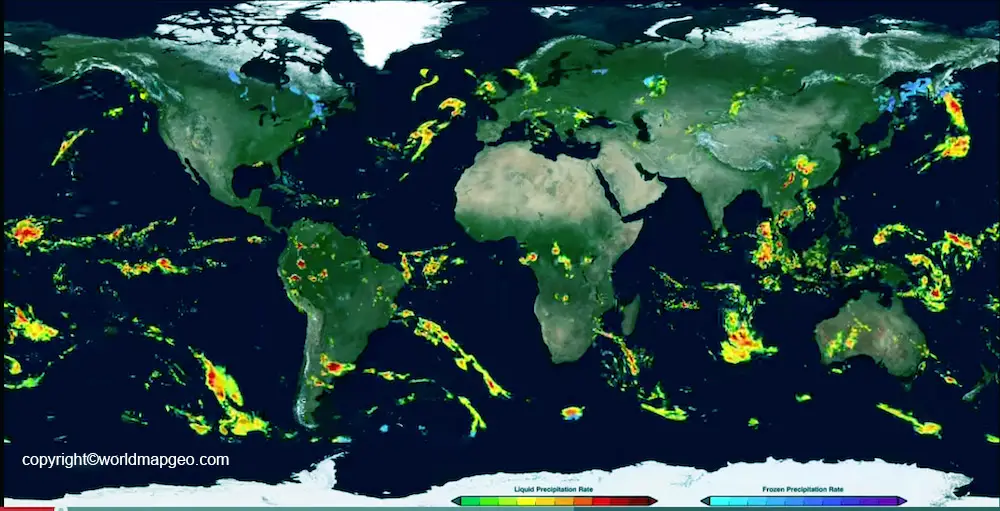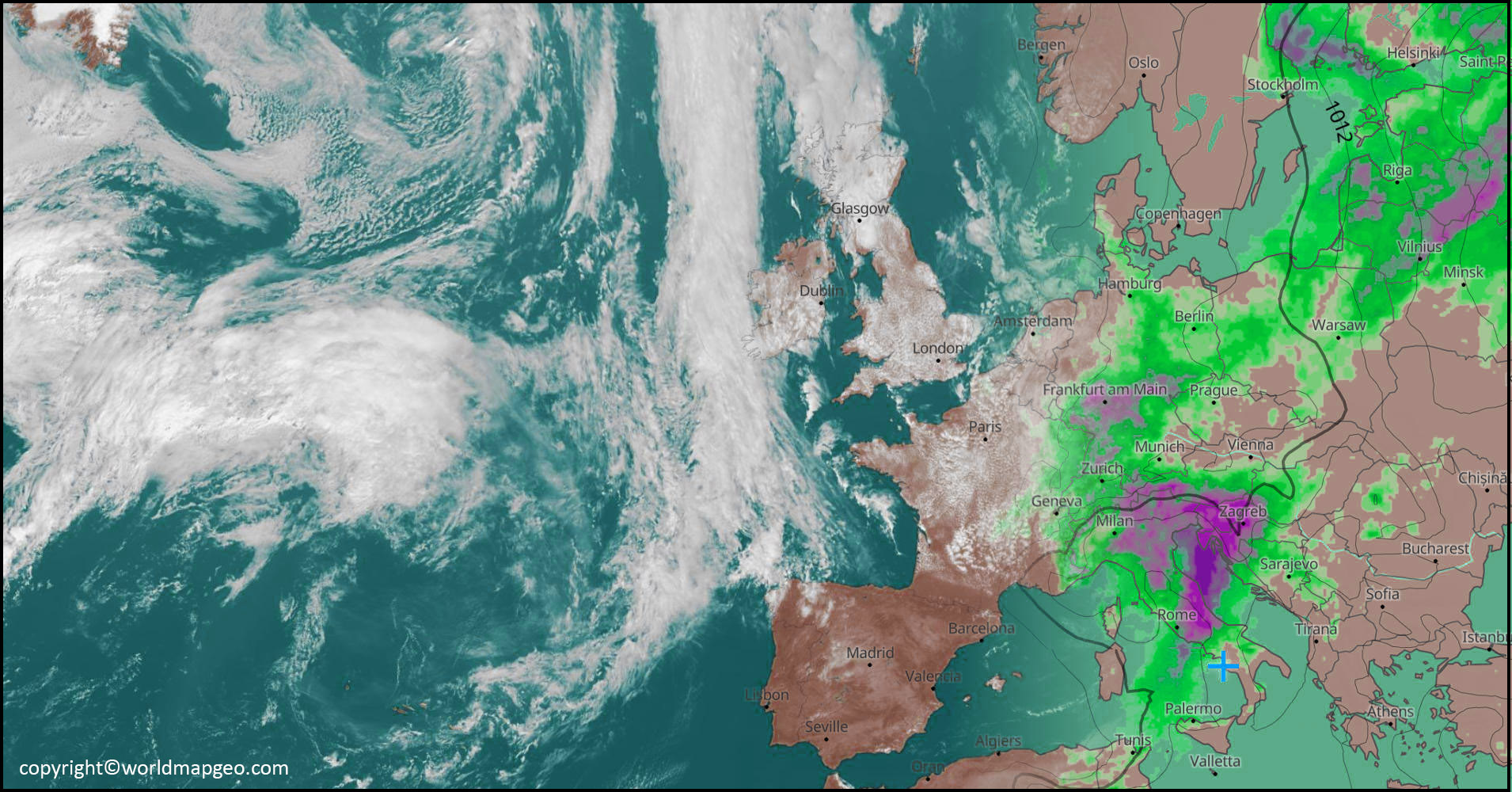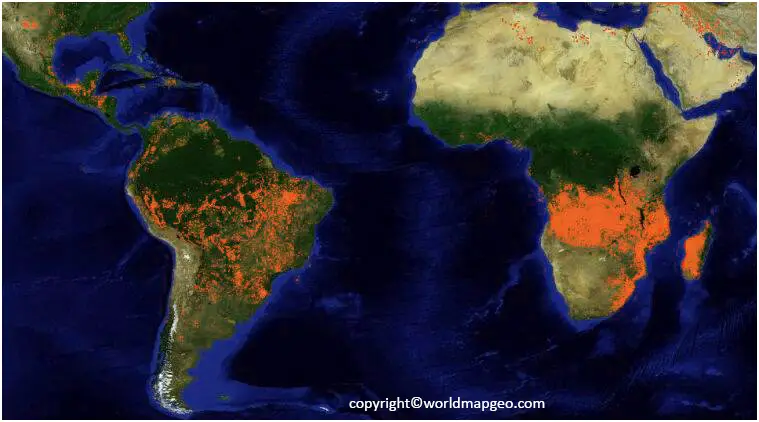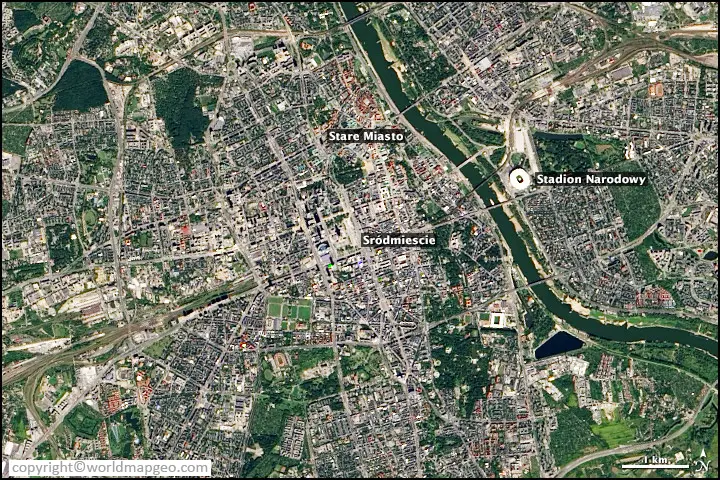World Satellite Map: Exploring Earth from space has become more accessible, and the data accuracy is incredible. In addition, we can now view the Earth through satellite, thanks to GIS technology. We’re delighted to share with you a blog on satellite maps. If you’re a geographer or work in a field involving mapping, you’ll find this piece quite useful.
Depending on your requirements, you can employ a variety of satellite data sources. Some platforms allow you to view data in your browser, while others will enable you to download it so you can analyze it and extract useful information. Some concentrate on open (free) satellite imagery, while others focus on the highest resolution satellite photography that can be purchased. As a result, we can tell you which providers have the most up-to-date satellite imagery, the greatest resolution, and the most extensive open data library.
Satellite Map
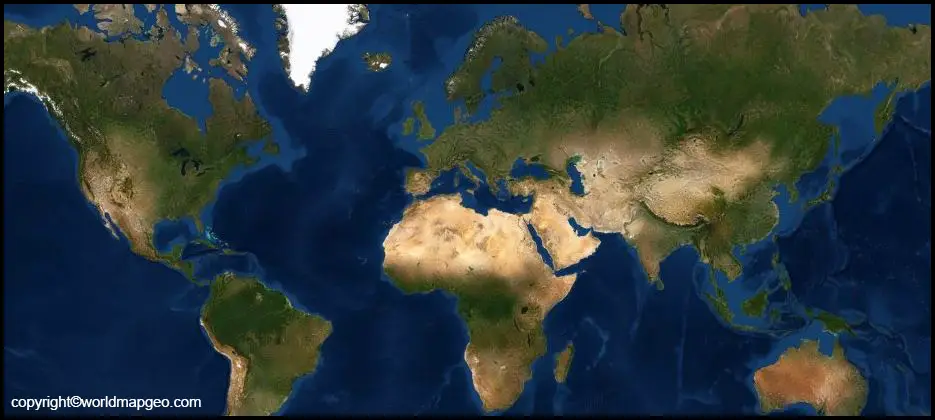
Satellite photos, like maps, provide a wealth of valuable and entertaining information if you have the right key. They may reveal how much a city has changed, how well our crops are growing, where a fire is burning, and when a storm is approaching. To get the most out of a satellite image, you must.
· Find a Scale: When people look at a world satellite map image, one of the first things they want to do is recognize places they know: their house, school, or workplace; a favorite park or tourist site; or a natural feature like a lake, river, or mountain crest. Many of these things can be seen in military or commercial satellite photos. These satellites zoom in on small areas to acquire intricate details as small as individual residences or autos. But unfortunately, they frequently forsake the big picture in the process.
· Find patterns, textures, and forms: You know how skilled humans are at discovering ways if you’ve ever spent a day recognizing animals and other shapes in the clouds. This expertise is practical when evaluating world satellite map photos because characteristic patterns may be linked to external maps to identify essential features. For example, rivers, lakes, and oceans have distinct shapes and appear on maps; they are frequently the most leisurely features to identify.
World Satellite Map
Other patterns emerge from how people use the land. Farms typically have geometric shapes—circles or rectangles—contrasting with nature’s more chaotic patterns. When a forest is cut down, the clearing is frequently square or has a sequence of herringbone lines that run parallel to roadways. A straight line in an image is almost definitely human-made, and it could be a road, a canal, or some other form of land-use boundary.
· Color Definition: The hue of an image is determined by the type of light measured by the world satellite map instrument. True-color photographs employ visible light—red, green, and blue wavelengths—to produce hues similar to those seen from space. Infrared light is used in false-color pictures, which can have unexpected colors.
Satellite Weather Map
· Locate North: When you’re lost, identify a familiar location and orient yourself around it. Satellite photographs use the same technique. If you know where north is, you can tell whether a mountain range runs north to south or east to west or whether a city is on the east or west bank of a river. These particulars can assist you in matching features to a map. Most photos at the Earth Observatory have north up. A north arrow appears in all photographs.
· Consider your previous experience: Knowledge of the location is maybe the most effective technique for deciphering a satellite image. For example, if you know that a forest was destroyed by a wildfire last year, the dark brown patch of woodland is most likely a burn scar, not a lava flow or shadow.
Satellite Fire Map
These suggestions come from Earth Observatory writers and visualizers, who use them daily to analyze photos. They’ll assist you in becoming orientated enough to extract useful information from world satellite map photos.
Satellite Map View
You may download your subject of interest or even international coverage if self-hosting is required. To obtain the information you need, choose from a variety of options. Create virtual worlds or realistic games using the data. Most free satellite data is either dated (from a few months to a few years, see Google Earth) or low resolution (you can detect rough building shapes but not cars or people). Near-real-time, high-resolution satellite data from open data programs are typically exclusively provided for humanitarian purposes (Maxar Open Data program offers free high-resolution data to natural disaster recovery teams).
World Map Satellite view
A map in satellite view provides a unique and visually stunning perspective of the Earth’s surface as captured by satellites orbiting the planet. It offers a detailed portrayal of the Earth’s landforms, bodies of water, vegetation, and human settlements. Here’s some information about a map in satellite view:
- High-Resolution Imagery: Satellite imagery used in a map in satellite view is typically captured by advanced remote sensing satellites equipped with high-resolution sensors. These sensors capture images of the Earth’s surface from space, providing a level of detail that allows users to observe various features with precision.
- Landforms and Topography: A satellite view of the world map showcases the Earth’s landforms, including mountains, valleys, plateaus, plains, and deserts. Users can observe the ruggedness of mountain ranges, the depths of canyons, and the vastness of deserts. The topography of different regions becomes apparent as satellite imagery highlights the variations in elevation and relief.
- Bodies of Water: Satellite imagery captures the Earth’s bodies of water, including oceans, seas, lakes, rivers, and coastlines, in remarkable detail. Users can explore the vastness of the oceans, observe the meandering course of rivers, and identify significant lakes and seas. The varying shades of blue in the imagery indicate differences in water depth and clarity.
- Vegetation and Land Cover: Satellite view maps showcase the Earth’s vegetation and land cover patterns. Lush forests, grasslands, agricultural areas, and barren regions are clearly visible, allowing users to understand the distribution of vegetation types across different parts of the world. The imagery reveals the intricacies of ecosystems and the impact of human activities on the land.
- Human Settlements and Infrastructure: Satellite imagery captures human settlements, cities, towns, and infrastructure on a global scale. Users can identify urban areas, road networks, airports, ports, and other human-built structures. This information provides insights into patterns of urbanization, population density, and the impact of human civilization on the landscape.
- Weather and Natural Phenomena: Satellite view maps also capture weather patterns and natural phenomena. Users can observe cloud formations, storms, hurricanes, and other atmospheric phenomena. Additionally, satellite imagery can provide insights into geological events such as volcanic eruptions, earthquakes, and land movements.
- Real-Time and Historical Data: Some satellite imagery platforms provide real-time data, allowing users to observe current weather conditions, monitor natural disasters, or track environmental changes. Historical satellite imagery provides a valuable resource for researchers, enabling the study of long-term trends, environmental changes, and land use over time.
- Scientific and Practical Applications: Satellite view maps have numerous scientific and practical applications. They are instrumental in environmental monitoring, climate research, land management, urban planning, and disaster response. Satellite imagery provides valuable information for assessing the impact of human activities on the environment, studying climate change, and understanding the Earth’s natural processes.
In conclusion, a satellite view offers a captivating and informative perspective of the Earth’s surface. It showcases the planet’s landforms, bodies of water, vegetation, and human settlements, providing valuable insights into the Earth’s natural and human-made features. Whether used for scientific research, environmental monitoring, or simply for exploration and appreciation, a world map in satellite view offers a visually stunning representation of our planet
